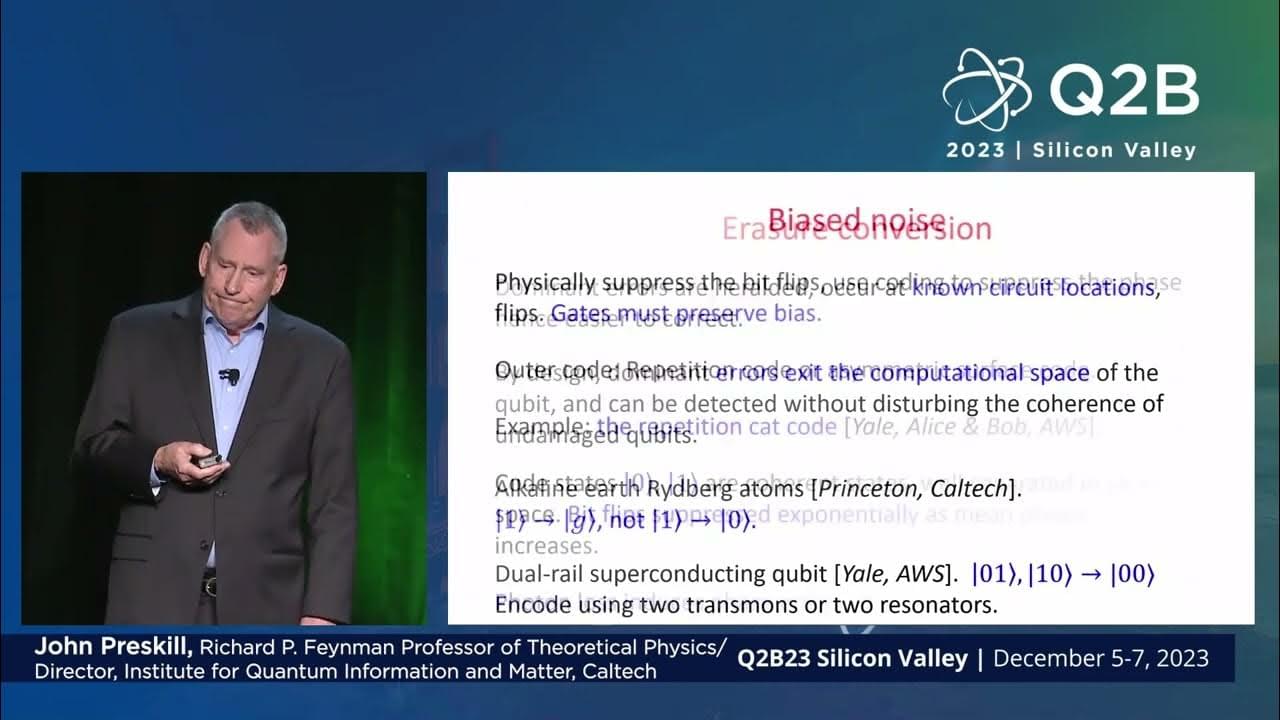Jan 5, 2024
James Cameron Says He Tried to Warn Us About AI
Posted by Kelvin Dafiaghor in category: robotics/AI
James Cameron has some choice words about artificial intelligence in the entertainment industry and the world at large.
James Cameron has some choice words about artificial intelligence in the entertainment industry and the world at large.

In this introduction to quantum consciousness, Justin Riddle presents six arguments that quantum consciousness is an important theory of mind.\
\
To summarize them briefly, People always identify as their latest technology and so most people believe that they are a digital computer. Time to update those models of self, because… Quantum computers are here. We wouldn’t want the brick of metal in our pocket to have greater computational power than our brain. People say the brain is too warm, wet, and noisy for quantum effects; yet, evidence keeps emerging for quantum effects in biology (such as photosynthesis). Where do we draw the line? Evolution might be selecting for quantum systems that can maintain quantum coherence. The debate around the role of quantum mechanics in consciousness has been raging for 100 years. Many key historical figures like Bohr, Schrodinger, Heisenberg, von Neumann entertained the idea that quantum mechanics might relate to our mind. Physical theories that are purely deterministic have failed to account for key aspects of subjective experience. There may be novel answers from a perspective that incorporate new physics.\
\
0:00 Introduction\
1:26 1. People identify as their latest technology\
4:07 2. Quantum computers are here\
7:30 3. Biology utilizes quantum properties\
12:00 4. Evolution selects for quantum systems\
14:10 5. Historical precedent for quantum consciousness\
16:30 6. Failure of physical theories to explain\
a. Sense of self\
b. Freewill\
c. Meaning\
21:07 Outro\
\
#quantum\
#consciousness\
#philosophy\
\
Website: www.justinriddlepodcast.com\
Email: [email protected]\
Twitter: @JRiddlePodcast\
\
Music licensed from and created by Baylor Odabashian. BandCamp: @UnscrewablePooch\
Painting behind me by Paul Seli. IG: @paul.seli.art\
\
Relevant external link:\
\
Introducing AutoRT, SARA-RT and RT-Trajectory to improve real-world robot data collection, speed, and generalization.
Picture a future in which a simple request to your personal helper robot — “tidy the house” or “cook us a delicious, healthy meal” — is all it takes to get those jobs done. These tasks, straightforward for humans, require a high-level understanding of the world for robots.
Today we’re announcing a suite of advances in robotics research that bring us a step closer to this future. AutoRT, SARA-RT, and RT-Trajectory build on our historic Robotics Transformers work to help robots make decisions faster, and better understand and navigate their environments.
A material that doesn’t just rival the strength of diamonds and graphene, but boasts a yield strength 10 times greater than Kevlar, renowned for its use in bulletproof vests.
Researchers at Delft University of Technology, led by assistant professor Richard Norte, have unveiled a remarkable new material with the potential to impact the world of material science: amorphous silicon carbide (a-SiC).
Beyond its exceptional strength, this material demonstrates mechanical properties crucial for vibration isolation on a microchip. Amorphous silicon carbide is therefore particularly suitable for making ultra-sensitive microchip sensors.
Recent research realizes ferroelectric hafnium oxide memristors with ultra-low conductance and inherent current-voltage nonlinearity to mitigate limitations that have obstructed commercialization of brain-inspired neuromorphic hardware.
Southern Company has a historic commitment to energy innovation. Since the 1960s, the company has invested well over $2 billion in research and development (R&D), and currently, their employees are on the forefront of delivering new ideas to build the future of energy.
Enter Spot—an agile robot. Chethan Acharya, a principal research engineer within Southern Company R&D, first discovered Spot on social media.
At the time, Acharya’s job was to find and test new sensors, analytics tools, and other solutions to help Southern Company improve operations and maintenance (O&M) activities while also lowering costs.
With the market for wearable electric devices growing rapidly, stretchable solar cells that can function under strain have received considerable attention as an energy source. To build such solar cells, it is necessary that their photoactive layer, which converts light into electricity, shows high electrical performance while possessing mechanical elasticity. However, satisfying both of these two requirements is challenging, making stretchable solar cells difficult to develop.
A KAIST research team from the Department of Chemical and Biomolecular Engineering (CBE) led by Professor Bumjoon Kim announced the development of a new conductive polymer material that achieved both high electrical performance and elasticity while introducing the world’s highest-performing stretchable organic solar cell.
Figure 1. Chemical structure of the newly developed conductive polymer and performance of stretchable organic solar cells using the material. (Image: KAIST)
The commercial space industry recently received a boost after NASA awarded 10 small businesses up to $150,000 each as part of NASA’s Small Business Innovation Research (SBIR) Ignite program, granting each company six months to demonstrate the viability and additional standards of their mission proposals. This funding comes as part of the second round of Phase I awards and holds the potential to continue the development of the commercial space industry for the short-and long-term.
“The investments we’re able to offer through SBIR Ignite give us the ability to de-risk technologies that have a strong commercial pull, helping make them more attractive to outside investors, customers, and partners,” said Jason L. Kessler, who is the Program Executive for the NASA SBIR & Small Business Technology Transfer (STTR) Program. “We also hope it advances the sometimes-overlooked goal of all SBIR programs to increase private-sector commercialization of the innovations derived from federal research and development funding.”
The 10 companies selected for this latest round of funding include (in alphabetical order): Astral Forge LLC, Astrobotic Technology Inc., Benchmark Space Systems, Brayton Energy LLC, Channel-Logistics LLC dba Space-Eyes, GeoVisual Analytics, Lunar Resources Inc., Space Lab Technologies LLC, Space Tango, and VerdeGo Aero.
Reminds me of how the space shuttle moved in orbit. Great idea though hopefully they’ll pass it on to us civilians too. That could be very useful. Though the military sometimes passes their tech to us like the CIA is responsible for some medical science amazingly. Yes I was surprised.
DARPA has selected Aurora Flight Sciences to build a full-scale X-plane to demonstrate the viability of using active flow control (AFC) actuators for primary flight control. The award is Phase 3 of the Control of Revolutionary Aircraft with Novel Effectors (CRANE) program.
The X-65 flight is controlled by using jets of air from a pressurized source to shape the flow of air over the aircraft surface, with AFC effectors on several surfaces to control the plane’s roll, pitch, and yaw. Eliminating external moving parts is expected to reduce weight and complexity and to improve performance.

John Preskill, Richard P. Feynman Professor of Theoretical Physics and Director, Institute for Quantum Information and Matter, California Institute of Technology | Crossing the Quantum Chasm: From NISQ to Fault Tolerance.
